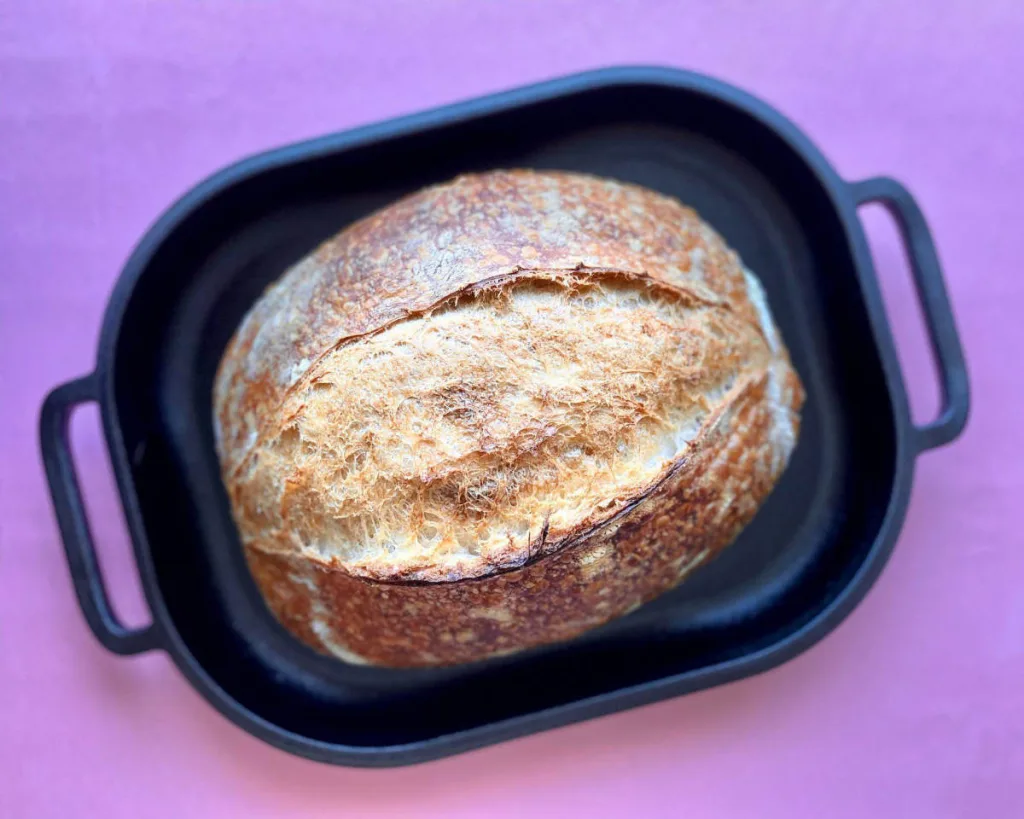The Nextdoor app typically is a hot mess of community grievances, some valid, many overblown. Last year, it delivered pure joy amid the COVID pandemic in the form of a neighbor’s offer to share some of her sourdough starter.
I’d long harbored ambitions of growing my own starter but never got around to it (translation: I was too l-a-z-y). Sourdough starter is a living thing. It needs nurturing – hence its nickname “the baby.” I don’t even do well with houseplants. I was sure I’d kill the baby.
But with the world shut down tight last April and the offer of already-started starter, I decided the time was finally right. So “Heidi” and I arranged to meet at her house. Both of us masked up and peering at each other over her fence, she handed me a Mason jar half-filled with sleepy-looking goo.
“It’s been going since 1881!” she declared.
Feeling equal parts nervous (what if I kill it???) and excited (hoo-wee, better homemade bread!), I ferried the thing home and proudly showed it off to Richard.
“We’re in the middle of a pandemic and you just went out to meet a stranger to pick up a jar of living organisms?” he asked.
“Yup!” I said. “It’ll be great!”
And you know what? It has been. Starter (that’s her name) is a hippie chick happy to live in the fridge most of the time and thrive on weekly feedings of AP + whole wheat flour + a pinch of sugar and an equal amount of filtered water. Over the past year I’ve scoured blog posts and books, watched countless YouTube videos, commiserated with fellow bakers on Facebook and creeped on the Instagram accounts of ace bread gurus for tips and tricks. I’ve found fun ways to use the discard from feedings (you don’t think I’d actually throw Starter away, do you?), including this ace sourdough pizza dough from The Washington Post and improvised cocktail crackers to go with my evening martini.
ll this makes me feel very handy and pioneer-y – until I remember that one loaf of bread takes, like, 24 hours from the time I feed Starter until I pull a golden loaf from the oven. I guess the time-consuming aspect is what really hints at the pioneer experience, which is inherently the opposite of convenient (and explains why the quicker gratification of banana bread supplanted sourdough in many home kitchens). I’ll never again bitch about paying $12 for a loaf of fancy-pants artisanal bread now that I know firsthand these things take time, of which I have plenty, and skill, which I’m still acquiring.
All of that culminated this week in this lovely loaf: a crackly, blistered crust with a gorgeous “ear,” nice height and a tender, open (but not too open) interior:

I started following a bunch of bakers on Instagram, and that’s how came across the Challenger Bread Pan (that’s my bread pictured in it above). Most home bread bakers use a Dutch oven as their baking vessel, and that certainly works very well. But the $279 Challenger, a 22-pound, cast-iron beast, was a definite upgrade. It’s generous size accommodates round loaves or batards, and its rectangular cloche top traps plenty of steam — especially when you toss in a couple of ice cubes with the dough — for great crust.
The Case for Vintage Cookware >>
It’s still a work in progress. It’ll always be a work in progress. Creeping on Toronto-based bread master Matthew James Duffy‘s Instagram Reels (thanks to which I could finally somewhat grasp how to shape a batard) led to signing up for his digital sourdough course (highly recommend!). Turns out he’s also a fan of the Challenger pan and thinks it does an even better job for baking bread than a pro bakery deck oven.
Freshly milled heritage grain would surely make my bread even better, he raves. He’s right, of course. But I haven’t gone down that rabbit hole. Yet.
It’s only a matter of time.
